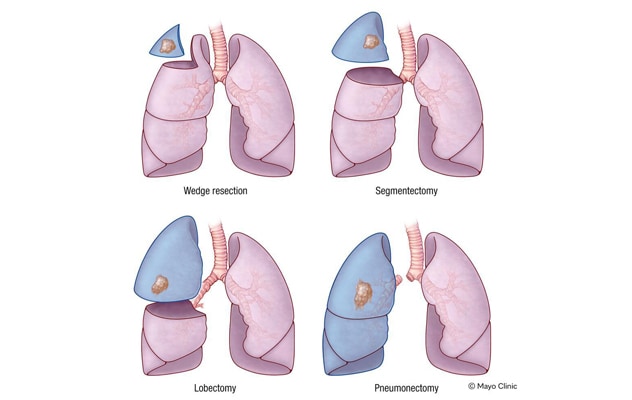Nov. 01, 2025
Surgery is the standard of care for curative treatment of early-stage lung cancer. The increasing detection of stage 1 disease through screening programs means more patients are eligible for less extensive procedures, such as wedge resection or segmentectomy, rather than traditional lobectomy. Ensuring complete tumor removal along with accurate lymph node staging is critical for curative intent and long-term outcomes.
A recent set of studies led by Mayo Clinic Thoracic Surgery investigators in Rochester, Minnesota, in close collaboration with pulmonary pathologists, evaluated how the routine use of frozen section pathology helps surgeons performing operations for clinical stage 1A non-small cell lung cancer.
The research analyzed outcomes in over 1,000 patients, focusing on the diagnostic yield and clinical impact of routine intraoperative frozen section pathology for both resection margins and lymph nodes. The findings demonstrated that frozen section pathology provides surgeons with reliable, real-time information, enabling immediate adjustments to the surgical plan and reducing the risk of incomplete resections or missed nodal disease.
Coordinated expertise in intraoperative diagnostics
The studies, published in the Journal of Thoracic and Cardiovascular Surgery and The Annals of Thoracic Surgery, show that using frozen section pathology during early-stage lung cancer surgery gives surgeons highly accurate, real-time information about lymph node involvement and status of margins of resection. In one of these studies, frozen section pathology correctly identified whether cancer had spread to the lymph nodes in nearly all patients, about 99% were accurately classified as either having cancer in the nodes or not. Among those who did have cancer in their lymph nodes, frozen section pathology was able to detect it in 80% of cases.
Lung cancer surgeries

Lung cancer surgeries
Image shows types of surgery for lung cancer.
In the other study, frozen section pathology correctly identified most instances where margins of resection were compromised by cancer. This allowed the surgeon to alter the procedure to significantly decrease the potential rate of incomplete tumor removal.
Mayo Clinic's legacy in frozen section pathology began in 1905, when Dr. Louis Wilson pioneered the technique, laying the foundation for a practice that continues to shape surgical decision-making today. "The use of frozen section pathology during lung cancer surgery is a highly coordinated effort," explains Anja C. Roden, M.D., pulmonary pathologist at Mayo Clinic and a key collaborator in the studies.
"It relies on advanced technical capabilities and the dedication of a highly skilled team, including surgical pathologists, pathology trainees, pathology assistants, histotechnologists, administrative personnel and laboratory staff, working seamlessly to deliver rapid, accurate evaluations of surgical specimens during procedures," says Dr. Roden. "This real-time diagnostic approach provides surgeons with immediate insight into margin and lymph node status, allowing them to adjust the surgical plan on the spot, such as converting to a lobectomy or performing additional resection when cancer is detected."
"At Mayo Clinic, as we care for patients with lung cancer, we want to make sure we have all possible information available to make informed decisions in the best interests of our patients," says Luis F. Tapias Vargas, M.D., a thoracic surgeon and lead author on the studies. By reducing the chance of missing hidden cancer and lowering the risk of needing further procedures or unexpected treatments, frozen section pathology supports more precise and confident decision-making. For patients, this means a safer operation and a better chance of complete cancer removal in a single surgery.
For more information
Ortiz, BA et al. Diagnostic yield of routine frozen section pathology examination of lymph nodes in lung resections for clinical stage IA non-small cell lung cancer. The Journal of Thoracic and Cardiovascular Surgery. In press.
Ortiz, BA et al. Impact of frozen section pathology examination of surgical margins in sublobar pulmonary resections for clinical stage IA non-small cell lung cancer. The Annals of Thoracic Surgery. In press.
Refer a patient to Mayo Clinic.